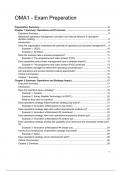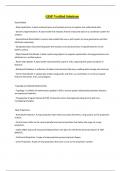Summary
Operations Management Summary
- Course
- Institution
- Book
The summary for the Operations Management (OMA1) class of the International Strategy & Business Development Minor at Hanze University of Applied Sciences provides a comprehensive overview of key topics covered in the course. The summary incorporates essential notes from chapters 1, 2, 6, 7, 11, 12,...
[Show more]




